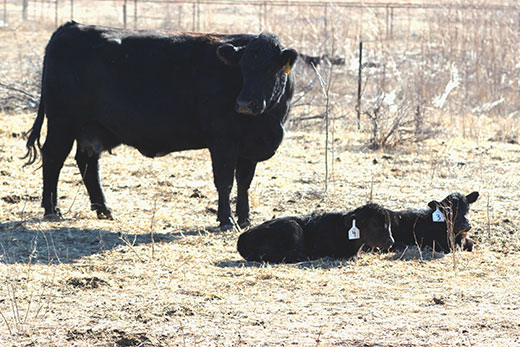
Cattle producers should understand their objective for having cattle in order to make a profit for the business. (K-State Research and Extension file photo)
Cattle Chat: Controlling costs is key to making profits
K-State beef cattle expert discuss factors for business success
Dec. 1, 2020
MANHATTAN, Kan. -- If a business wants to keep its doors open, it has to make a profit. Similarly, cattle operations must turn a profit, according to the experts at the Kansas State University Beef Cattle Institute.
To that point, agricultural economist Dustin Pendell has been analyzing the expenses and revenues of cattle operations through his research. On the weekly podcast, Cattle Chat, K-State’s beef cattle experts focused on net return over total costs.
“When we look at average returns over total costs for all operations, most years are below zero,” said veterinarian Brad White, who is also director of the Beef Cattle Institute director.
Pendell said some of producers’ main fixed costs are expenses from interest, and depreciation of equipment and cattle.
“Another big cost is the unpaid operator labor, and that is one the differences between the variable and fixed cost charts. It's about $150 per cow difference showing up in the net unpaid labor cost,” he said.
Pendell referred to a graph that shows negative net returns, but noted that despite how that graph looks, some people are still making a return on investment. For 66% of producers, costs are the main difference between the net return of low- and high-profit farms.
“A lot of the indications for those herds that are still making profits in tough years is that they control costs,” said K-State veterinarian Bob Larson.
Larson noted that another pattern found in the data is that larger operations -- not necessarily larger herds -- tend to have lower total cost per cow.
“If you think about what I want to accomplish for my total farming operation, including cattle and crops, owning the cattle kind of fits in there with some positives,” Larson said. “They don't show up totally in your numbers.”
White said the producer needs to understand their objective for having cattle, including the fixed and variable costs of an operation.
Here are the top considerations for managing fixed costs in the cattle operation:
- Understand your objective of having cows
- Optimize labor use for the operation
- Manage depreciation
- Measure fixed costs: you cannot manage them if you do not measure them
To hear more of the discussion, tune in to the BCI Cattle Chat podcast.

